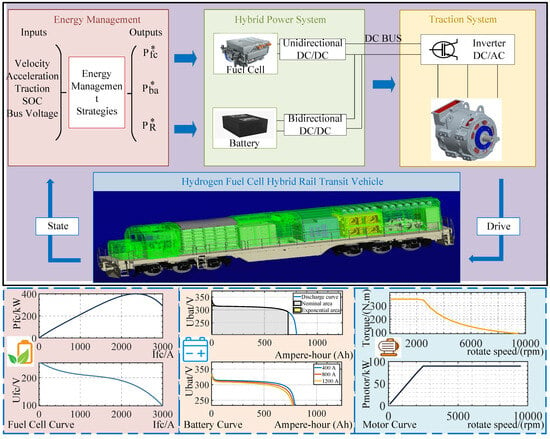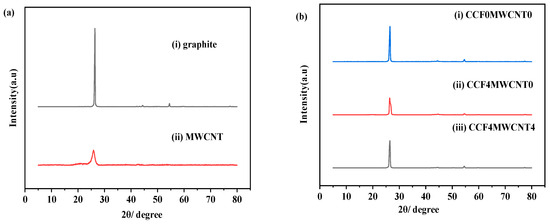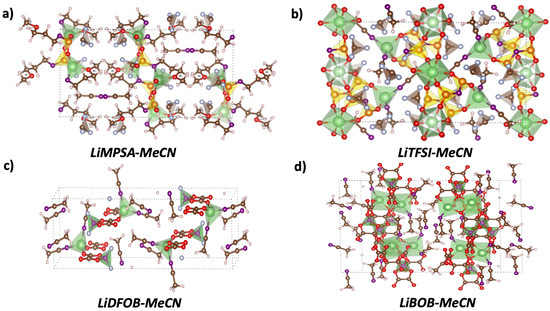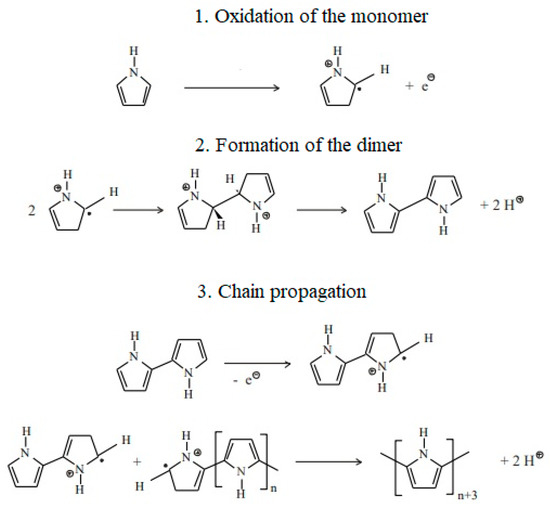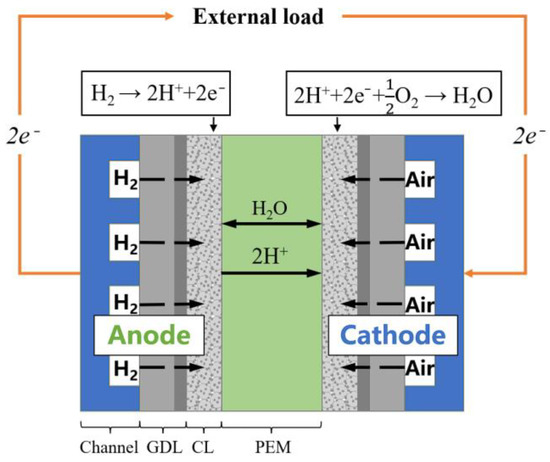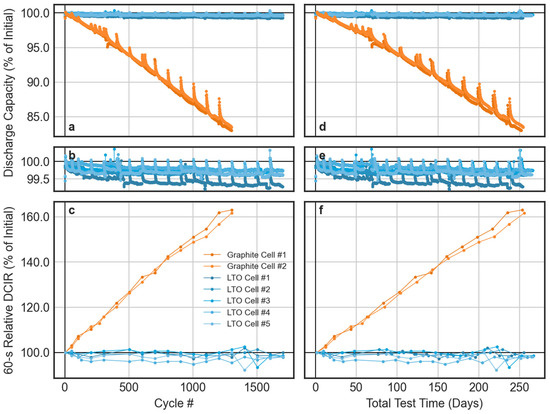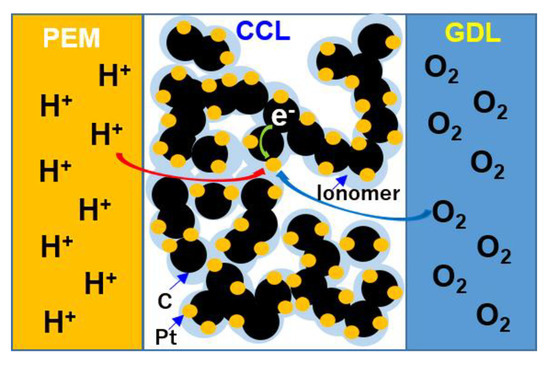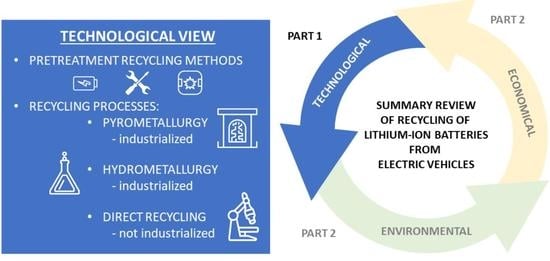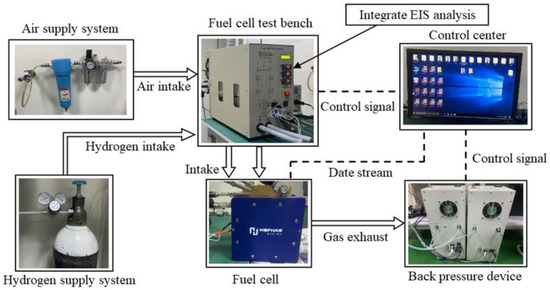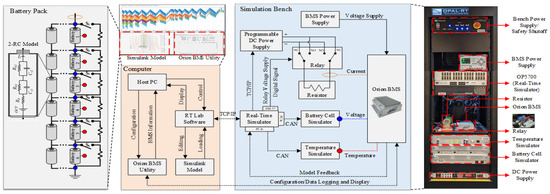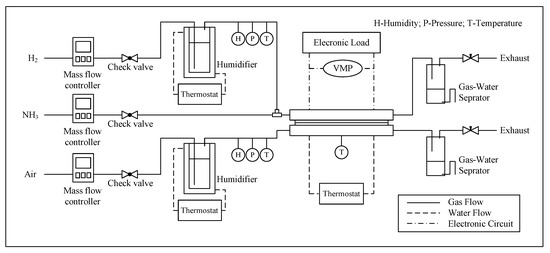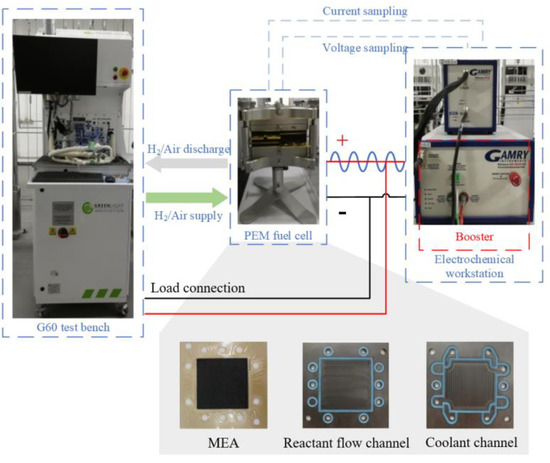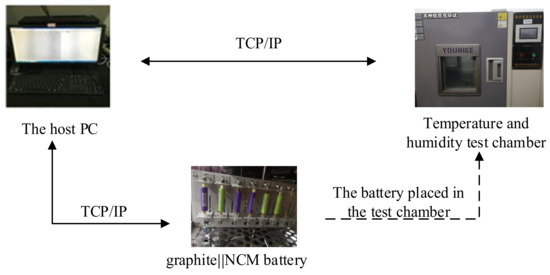Batteries, Fuel Cells and Supercapacitors Technologies
Share This Topical Collection
Editors
 Prof. Dr. Haifeng Dai
Prof. Dr. Haifeng Dai
 Prof. Dr. Haifeng Dai
Prof. Dr. Haifeng Dai
E-Mail
Website
Collection Editor
School of Automotive Studies, Tongji University, No. 4800, Caoan Road, Jiading District, Shanghai 201804, China
Interests: electrical/hybrid vehicles; energy storage and battery management system; wireless power transfer
Special Issues, Collections and Topics in MDPI journals
 Dr. Michael Knapp
Dr. Michael Knapp
 Dr. Michael Knapp
Dr. Michael Knapp
E-Mail
Website
Collection Editor
Institute for Applied Materials (IAM), Karlsruhe Institute of Technology (KIT), 76344 Eggenstein-Leopoldshafen, Germany
Interests: development of scattering techniques; energy storage systems; materials science; experiments and characterization; synchrotron research
 Dr. Jiangong Zhu
Dr. Jiangong Zhu
 Dr. Jiangong Zhu
Dr. Jiangong Zhu
E-Mail
Website
Collection Editor
School of Automotive Studies, Tongji University, No. 4800, Caoan Road, Jiading District, Shanghai 201804, China
Interests: ex-situ (post-mortem analysis) and in-situ methods (e.g., impedance, neutron powder diffraction) to investigate the battery degradation; inventing new science methods (e.g., machine learning and optimization) to prognose the battery state of health and manage the battery lifespan
Special Issues, Collections and Topics in MDPI journals
Topical Collection Information
Dear Colleagues,
Energy storage and conversion technology is a key topic for research, industry, and business. Batteries, fuel cells, and supercapacitors have become the dominant energy storage and conversion devices for portable electric devices, electric vehicles (EV), and many other applications. To consolidate our understanding of the latest developments in these topics, this Topical Collection aims to provide a comprehensive overview of the state of the art of batteries, fuel cells, and supercapacitor technologies for EVs all over the world. The Topical Collection will publish high-quality full research and reviews addressing the above topics.
Potential topics include but are not limited to the following research areas:
- Energy management system design, control, and simulation;
- Modeling including electrical, thermal, electrochemical, and their combination models;
- State estimation and prediction for energy storage and conversion systems;
- Experimental techniques for testing and characterization;
- Safety issues, thermal runaway, and development of safer materials;
- Degradation mechanisms and characterization methods;
- Lifetime diagnosis and prognosis methods;
- Design and optimization;
- Machine learning and algorithm design;
- Component reliability and development of key components;
- Technical evaluations and market analyses.
Prof. Dr. Haifeng Dai
Dr. Michael Knapp
Dr. Jiangong Zhu
Collection Editors
Manuscript Submission Information
Manuscripts should be submitted online at www.mdpi.com by registering and logging in to this website. Once you are registered, click here to go to the submission form. Manuscripts can be submitted until the deadline. All submissions that pass pre-check are peer-reviewed. Accepted papers will be published continuously in the journal (as soon as accepted) and will be listed together on the collection website. Research articles, review articles as well as short communications are invited. For planned papers, a title and short abstract (about 100 words) can be sent to the Editorial Office for announcement on this website.
Submitted manuscripts should not have been published previously, nor be under consideration for publication elsewhere (except conference proceedings papers). All manuscripts are thoroughly refereed through a single-blind peer-review process. A guide for authors and other relevant information for submission of manuscripts is available on the Instructions for Authors page. Energies is an international peer-reviewed open access semimonthly journal published by MDPI.
Please visit the Instructions for Authors page before submitting a manuscript.
The Article Processing Charge (APC) for publication in this open access journal is 2600 CHF (Swiss Francs).
Submitted papers should be well formatted and use good English. Authors may use MDPI's
English editing service prior to publication or during author revisions.
Keywords
- Energy storage and management
- Model
- State of estimation
- Safety and degradation
- Component development
- Experiments and characterization
Published Papers (17 papers)
Open AccessArticle
Energy Management Strategy Based on Reinforcement Learning and Frequency Decoupling for Fuel Cell Hybrid Powertrain
by
Hongzhe Li, Jinsong Kang and Cheng Li
Viewed by 342
Abstract
This study presents a Two-Layer Deep Deterministic Policy Gradient (TL-DDPG) energy management strategy for Hydrogen fuel cell hybrid train, that aims to solve the problem that traditional reinforcement learning strategies require high initial values and are difficult to optimize global variables. Augmenting the
[...] Read more.
This study presents a Two-Layer Deep Deterministic Policy Gradient (TL-DDPG) energy management strategy for Hydrogen fuel cell hybrid train, that aims to solve the problem that traditional reinforcement learning strategies require high initial values and are difficult to optimize global variables. Augmenting the optimization capabilities of the inner layer, a frequency decoupling algorithm integrates into the outer layer, furnishing a fitting initial value for strategy optimization. This addition aims to bolster the stability of fuel cell output, thereby enhancing the overall efficiency of the hybrid power system. In comparison with the traditional reinforcement learning algorithm, the proposed approach demonstrates notable improvements: a reduction in hydrogen consumption per 100 km by 16.3 kg, a 9.7% increase in the output power stability of the fuel cell, and a 1.8% enhancement in its efficiency.
Full article
►▼
Show Figures
Open AccessArticle
Enhancing the Electrochemical Performance of ZnO-Co3O4 and Zn-Co-O Supercapacitor Electrodes Due to the In Situ Electrochemical Etching Process and the Formation of Co3O4 Nanoparticles
by
Khabibulla Abdullin, Maratbek Gabdullin, Zhanar Kalkozova, Vladislav Kudryashov, Mojtaba Mirzaeian, Kassym Yelemessov, Dinara Baskanbayeva and Abay Serikkanov
Viewed by 309
Abstract
Zinc oxide (ZnO) and materials based on it are often used to create battery-type supercapacitor electrodes and are considered as promising materials for hybrid asymmetric supercapacitors. However, when creating such electrodes, it is necessary to take into account the instability and degradation of
[...] Read more.
Zinc oxide (ZnO) and materials based on it are often used to create battery-type supercapacitor electrodes and are considered as promising materials for hybrid asymmetric supercapacitors. However, when creating such electrodes, it is necessary to take into account the instability and degradation of zinc oxide in aggressive environments with a non-neutral pH. To the best of our knowledge, studies of the changes in the properties of ZnO-containing electrodes in alkaline electrolytes have not been carried out. In this work, changes in the structure and properties of these electrodes under alkaline treatment were investigated using the example of ZnO-containing composites, which are often used for the manufacturing of supercapacitor electrodes. Supercapacitor electrodes made of two materials containing ZnO were studied: (i) a heterogeneous ZnO-Co
3O
4 system, and (ii) a hexagonal h-Zn-Co-O solid solution. A comparison was made between the structure and properties of these materials before and after in situ electrochemical oxidation in the process of measuring cyclic voltammetry and galvanostatic charge/discharge. It has been shown that the structure of both nanoparticles of the heterogeneous ZnO-Co
3O
4 system and the h-Zn-Co-O solid solution changes due to the dissolution of ZnO in the alkaline electrolyte 3.5 M KOH, with the short-term alkaline treatment producing cobalt and zinc hydroxides, and long-term exposure leading to electrochemical cyclic oxidation–reduction, forming cobalt oxide Co
3O
4. Since the resulting cobalt oxide nanoparticles are immobilized in the electrode structure, a considerable specific capacity of 446 F g
−1 or 74.4 mA h g
−1 is achieved at a mass loading of 0.0105 g. The fabricated hybrid capacitor showed a good electrochemical performance, with a series resistance of 0.2 Ohm and a capacitance retention of 87% after 10,000 cycles.
Full article
►▼
Show Figures
Open AccessArticle
Muti-Filler Composites Reinforced with Multiwalled Carbon Nanotubes and Chopped Carbon Fibers for the Bipolar Plate of Fuel Cells
by
Huili Wei, Guofeng Chang, Sichuan Xu and Jinling Liu
Viewed by 424
Abstract
To improve the conductivity and flexural strength of bipolar plates for proton-exchange membrane fuel cells, multi-filler-reinforced composites were prepared using graphite, multiwalled carbon nanotubes (MWCNTs), chopped carbon fibers (CCFs), and phenolic resin (PF). The effects of CCF content (0–6 wt.%) and MWCNT content
[...] Read more.
To improve the conductivity and flexural strength of bipolar plates for proton-exchange membrane fuel cells, multi-filler-reinforced composites were prepared using graphite, multiwalled carbon nanotubes (MWCNTs), chopped carbon fibers (CCFs), and phenolic resin (PF). The effects of CCF content (0–6 wt.%) and MWCNT content (0–8 wt.%) on the flexural strength, electrical conductivity, interfacial contact resistance (ICR), density, hydrophobicity, and corrosion behavior of the composites were investigated. Results showed that the addition of a small number of CCFs (≤4 wt.%) effectively improved the flexural strength but slightly reduced the electrical conductivity and increased the ICR of the graphite/PF/CCF composites. Further addition of MWCNTs (≤6 wt.%) significantly improved the electrical conductivity and ICR of the graphite/PF/CCF/MWCNT composites, while maintaining high flexural strength. When the composites were filled with 4 wt.% CCFs and 2 wt.% MWCNTs, their electrical conductivity, flexural strength, ICR under 1.38 MPa, and contact angle were 272.8 S/cm, 43.1 MPa, 1.19 mΩ·cm
2, and 101.5°, respectively. Compared to unreinforced composites, the electrical conductivity was reduced by 27.2%, the flexural strength was increased by 65.1%, and the composite possessed favorable hydrophobicity as well as corrosion behavior. This work reveals that CCFs and MWCNTs can effectively cooperate to improve composites’ electrical and flexural strength properties.
Full article
►▼
Show Figures
Open AccessFeature PaperArticle
The Relevance of Lithium Salt Solvate Crystals in Superconcentrated Electrolytes in Lithium Batteries
by
Jake A. Klorman and Kah Chun Lau
Cited by 2 | Viewed by 1177
Abstract
Based on the unique ubiquity of similar solvate structures found in solvate crystals and superconcentrated electrolytes, we performed a systematic study of four reported solvate crystals which consist of different lithium salts (i.e., LiMPSA, LiTFSI, LiDFOB, and LiBOB) solvated by acetonitrile (MeCN) based
[...] Read more.
Based on the unique ubiquity of similar solvate structures found in solvate crystals and superconcentrated electrolytes, we performed a systematic study of four reported solvate crystals which consist of different lithium salts (i.e., LiMPSA, LiTFSI, LiDFOB, and LiBOB) solvated by acetonitrile (MeCN) based on first principles calculations. Based on the calculations, these solvate crystals are predicted to be electronic insulators and are expected to be similar to their insulating liquid counterpart (e.g., 4 M superconcentrated LiTFSI-MeCN electrolyte), which has been confirmed to be a promising electrolyte in lithium batteries. Although the MeCN molecule is highly unstable during the reduction process, it is found that the salt-MeCN solvate molecules (e.g., LiTFSI-(MeCN)
2, LiDFOB-(MeCN)
2) and their charged counterparts (anions and cations) are both thermodynamically and electrochemically stable, which can be confirmed by Raman vibrational modes through the unique characteristic variation in C≡N bond stretching of MeCN molecules. Therefore, in addition to the development of new solvents or lithium salts, we suggest it is possible to utilize the formation of superconcentrated electrolytes with improved electrochemical stability based on existing known compounds to facilitate the development of novel electrolyte design in advanced lithium batteries.
Full article
►▼
Show Figures
Open AccessArticle
Structural and Electrochemical Properties of Musa acuminata Fiber Derived Hard Carbon as Anodes of Sodium-Ion Batteries
by
Meenatchi Thenappan, Kouthaman Mathiyalagan, Mozaffar Abdollahifar, Subadevi Rengapillai and Sivakumar Marimuthu
Cited by 2 | Viewed by 1816
Abstract
Hard carbon (HC) was successfully synthesized using a bio-waste precursor from
Musa acuminata fiber (MaF) as an eco-friendly option through the pyrolysis process at 500 °C. Further, it was activated using the chemical activating agents, NaOH and ZnCl
2, at 900 °C,
[...] Read more.
Hard carbon (HC) was successfully synthesized using a bio-waste precursor from
Musa acuminata fiber (MaF) as an eco-friendly option through the pyrolysis process at 500 °C. Further, it was activated using the chemical activating agents, NaOH and ZnCl
2, at 900 °C, named Na–MaFDHC and Zn–MaFDHC. The MaFDHCs are employed as anode materials for emerging sodium-ion batteries (NIBs). The nitrogen (N
2) adsorption and desorption studies and HRTEM images resulted that the MaFDHCs have a mesoporous nature. The surface area and pore diameter of the carbon materials are increased significantly after the treatment with activating agents, which are important factors for anodes of NIBs. The electrochemical performance of the MaFDHCs depends on the activation agent. Zn–MaFDHC with a higher surface area showed better results, yielding a charge capacity of about 114 mAh g
−1 at a 1C rate.
Full article
►▼
Show Figures
Open AccessArticle
Investigation of Water and Heat Transfer Mechanism in PEMFCs Based on a Two-Phase Non-Isothermal Model
by
Dapeng Gong, Sichuan Xu and Yuan Gao
Cited by 1 | Viewed by 1233
Abstract
In a proton exchange membrane fuel cell (PEMFC) system, proper management of water and heat transport is essential to improve its overall performance and durability. To comprehensively investigate the internal processes of PEMFCs, an improved two-phase non-isothermal model based on heat and water
[...] Read more.
In a proton exchange membrane fuel cell (PEMFC) system, proper management of water and heat transport is essential to improve its overall performance and durability. To comprehensively investigate the internal processes of PEMFCs, an improved two-phase non-isothermal model based on heat and water transfer mechanisms inside the fuel cell is developed. The results show that the model proposed in this work can predict the fuel cell’s performance accurately and is capable of exploring water and heat transfer phenomena inside fuel cells. Additionally, the water and heat transfer of cathodes and anodes under different relative humidity and temperatures are studied. It can be concluded that when the PEMFC operates under a constant voltage, the anode water content gradually increases, while the cathode water content gradually decreases. The maximum water content occurs at the interface between cathode catalyst layer and cathode gas diffusion layer, while the minimum value is attained at the interface between anode catalyst layer and anode gas diffusion layer. When the fuel cell operates at 0.75 V, although the water content of CCL is the highest, no back-diffusion of dissolved water occurs.
Full article
►▼
Show Figures
Open AccessArticle
Comparative Analysis of a New Class of Symmetric and Asymmetric Supercapacitors Constructed on the Basis of ITO Collectors
by
Michał Gocki, Agnieszka Jakubowska-Ciszek and Piotr Pruski
Cited by 1 | Viewed by 1203
Abstract
The paper presents the results of research on new electroconductive polymer materials, based on polypyrrole, for the different supercapacitor constructions, i.e., the symmetric and asymmetric constructions. All the supercapacitors considered contain ITO collectors. Measurements of the complex impedance frequency characteristics were performed for
[...] Read more.
The paper presents the results of research on new electroconductive polymer materials, based on polypyrrole, for the different supercapacitor constructions, i.e., the symmetric and asymmetric constructions. All the supercapacitors considered contain ITO collectors. Measurements of the complex impedance frequency characteristics were performed for these elements using the electrochemical impedance spectroscopy (EIS) method. Selected fractional-order models, known from the literature, have been used to model the impedance of these elements. The Particle Swarm Optimization (PSO) algorithm was used to estimate the model parameters. Selected estimation results, their comparison, and conclusions are also presented in the paper. The type of active electrolyte component has the greatest impact on the shape of the impedance frequency characteristics. In most cases, the highest capacitance values and the smallest resistance values were obtained for asymmetric supercapacitors.
Full article
►▼
Show Figures
Open AccessArticle
Numerical Study on the Effects of Water and Heat Transport on Two-Phase Flow in a Polymer Electrolyte Membrane Fuel Cell
by
Dapeng Gong, Sichuan Xu, Xuhui Wang and Yuan Gao
Cited by 1 | Viewed by 1577
Abstract
A one-dimensional transient non-isothermal model was developed to study the two-phase flow phenomenon in a polymer electrolyte membrane fuel cell. The model focused on the phase change between vapor and liquid water, and the transport of oxygen, hydrogen, water, and heat. The cell
[...] Read more.
A one-dimensional transient non-isothermal model was developed to study the two-phase flow phenomenon in a polymer electrolyte membrane fuel cell. The model focused on the phase change between vapor and liquid water, and the transport of oxygen, hydrogen, water, and heat. The cell was discretized into 39 control volumes, and the finite volume method and the iteration method were used to solve the transport equations. The variations in the state parameters of the model during fuel cell operations were analyzed. The results showed that, when the inlet gas humidity was high, the vapor tended to condense in gas diffusion layer regions close to the gas channel. As temperatures in these regions were low, the vapor was more likely to condense. Liquid water appeared latest in the middle of the anode gas diffusion layer, because the vapor concentration in this area is always lower than its saturated value. A higher operating temperature in a cell is beneficial to prevent flooding at the cathode.
Full article
►▼
Show Figures
Open AccessArticle
Examining the Performance of Implantable-Grade Lithium-Ion Cells after Overdischarge and Thermally Accelerated Aging
by
Jonathon R. Harding, Binghong Han, Samuel B. Madden and Quinn C. Horn
Cited by 6 | Viewed by 3084
Abstract
For implanted medical devices containing rechargeable batteries, maximizing battery lifetime is paramount as surgery is required for battery replacement. In non-life-sustaining applications (e.g., spinal cord stimulators or sacral nerve modulation), these implants may be left unused and unmaintained for extended periods, according to
[...] Read more.
For implanted medical devices containing rechargeable batteries, maximizing battery lifetime is paramount as surgery is required for battery replacement. In non-life-sustaining applications (e.g., spinal cord stimulators or sacral nerve modulation), these implants may be left unused and unmaintained for extended periods, according to patient preference or in the case of unexpected life events. In this study, we examine the performance of two commercial lithium-ion cells intended for implantable neurostimulators (using lithium titanium oxide (LTO) and graphite as the negative electrode) when subjected to repeated deep overdischarge and to aging at a high state of charge (SOC). The graphite-based cells exhibited significant performance decline and swelling after overdischarge and became unable to store a charge after 42 days at 0 V. In contrast, the LTO-based cells exhibited minimal changes in performance even after 84 days (the length of the study) at 0 V. When subjected to an accelerated aging protocol at 100% SOC, the graphite-based cells were found to age more rapidly than the LTO cells, which exhibited minimal aging over the course of the study period. These results show that practical LTO-based lithium-ion cells are much more tolerant of abuse as a result of neglect and misuse and are worth considering for use in high-value applications where battery replacement is difficult or impossible.
Full article
►▼
Show Figures
Open AccessArticle
Effect of Double-Sided 3D Patterned Cathode Catalyst Layers on Polymer Electrolyte Fuel Cell Performance
by
Taehyoung Noh, Kayoung Park, Ruijing Gao, Naoki Kimura, Gen Inoue and Yoshifumi Tsuge
Cited by 1 | Viewed by 1794
Abstract
Optimization of the structure of cathode catalyst layers (CCLs) for promoting the transfer of reactants and products in polymer electrolyte fuel cells (PEFCs) is important for improving the cell performance. In this study, using theoretical equations, we confirmed that the shortened proton conduction
[...] Read more.
Optimization of the structure of cathode catalyst layers (CCLs) for promoting the transfer of reactants and products in polymer electrolyte fuel cells (PEFCs) is important for improving the cell performance. In this study, using theoretical equations, we confirmed that the shortened proton conduction path in the ionomer layer (IL) with a 3D-patterned structure, compared to that in the IL with a flat-patterned structure, can improve the cell performance. We experimentally investigated the effect of the IL with a 3D-patterned structure included in the CCLs on the cell performance. Based on the combination of the flat- or 3D-pattern of the IL and the catalyst layer (CL), the samples were categorized as Str. 1 (3D-patterned CL without IL), Str. 2 (flat-patterned IL and CL), Str. 3 (3D-patterned IL and flat-patterned CL), and Str. 4 (3D-patterned IL and CL). All of the samples had different morphologies. According to the I–V curves and impedance spectra data acquired at 80 °C and 40% relative humidity, Str. 4 showed superior cell performance relative to those of the other CCLs. These results indicate that the structure of Str. 4 enhanced the proton conductivity at a low humidity at which proton conduction is usually poor, thereby resulting in improved cell performance.
Full article
►▼
Show Figures
Open AccessReview
Literature Review, Recycling of Lithium-Ion Batteries from Electric Vehicles, Part I: Recycling Technology
by
Anna Pražanová, Vaclav Knap and Daniel-Ioan Stroe
Cited by 24 | Viewed by 9268
Abstract
During recent years, emissions reduction has been tightened worldwide. Therefore, there is an increasing demand for electric vehicles (EVs) that can meet emission requirements. The growing number of new EVs increases the consumption of raw materials during production. Simultaneously, the number of used
[...] Read more.
During recent years, emissions reduction has been tightened worldwide. Therefore, there is an increasing demand for electric vehicles (EVs) that can meet emission requirements. The growing number of new EVs increases the consumption of raw materials during production. Simultaneously, the number of used EVs and subsequently retired lithium-ion batteries (LIBs) that need to be disposed of is also increasing. According to the current approaches, the recycling process technology appears to be one of the most promising solutions for the End-of-Life (EOL) LIBs—recycling and reusing of waste materials would reduce raw materials production and environmental burden. According to this performed literature review, 263 publications about “Recycling of Lithium-ion Batteries from Electric Vehicles” were classified into five sections: Recycling Processes, Battery Composition, Environmental Impact, Economic Evaluation, and Recycling & Rest. The whole work reviews the current-state of publications dedicated to recycling LIBs from EVs in the techno-environmental-economic summary. This paper covers the first part of the review work; it is devoted to the recycling technology processes and points out the main study fields in recycling that were found during this work.
Full article
►▼
Show Figures
Open AccessArticle
A Comparative Study of Equivalent Circuit Models for Electro-Chemical Impedance Spectroscopy Analysis of Proton Exchange Membrane Fuel Cells
by
Lei Zhao, Haifeng Dai, Fenglai Pei, Pingwen Ming, Xuezhe Wei and Jiangdong Zhou
Cited by 16 | Viewed by 3276
Abstract
Electrochemical impedance spectroscopy is one of the important tools for the performance analysis and diagnosis of proton exchange membrane fuel cells. The equivalent circuit model is an effective method for electrochemical impedance spectroscopy resolution. In this paper, four typical equivalent circuit models are
[...] Read more.
Electrochemical impedance spectroscopy is one of the important tools for the performance analysis and diagnosis of proton exchange membrane fuel cells. The equivalent circuit model is an effective method for electrochemical impedance spectroscopy resolution. In this paper, four typical equivalent circuit models are selected to comprehensively compare and analyze the difference in the fitting results of the models for the electrochemical impedance spectroscopy under different working conditions (inlet pressure, stoichiometry, and humidity) from the perspective of the fitting accuracy, change trend of the model parameters, and the goodness of fit. The results show that the fitting accuracy of the model with the Warburg element is the best for all under each working condition. When considering the goodness of fit, the model with constant phase components is the best choice for fitting electrochemical impedance spectroscopy under different inlet pressure and air stoichiometry. However, under different air humidity, the model with the Warburg element is best. This work can help to promote the development of internal state analysis, estimation, and diagnosis of the fuel cell based on the equivalent circuit modeling of electrochemical impedance spectroscopy.
Full article
►▼
Show Figures
Open AccessArticle
Performance Analysis of Commercial Passive Balancing Battery Management System Operation Using a Hardware-in-the-Loop Testbed
by
Asadullah Khalid, Alexander Stevenson and Arif I. Sarwat
Cited by 12 | Viewed by 3533
Abstract
With increased usage, individual batteries within the battery pack will begin to show disparate voltage and State of Charge (SOC) profiles, which will impact the time at which batteries become balanced. Commercial battery management systems (BMSs), used in electric vehicles (EVs) and microgrids,
[...] Read more.
With increased usage, individual batteries within the battery pack will begin to show disparate voltage and State of Charge (SOC) profiles, which will impact the time at which batteries become balanced. Commercial battery management systems (BMSs), used in electric vehicles (EVs) and microgrids, typically send out signals suggesting removal of individual batteries or entire packs to prevent thermal runaway scenarios. To reuse these batteries, this paper presents an analysis of an off-the-shelf Orion BMS with a constrained cycling approach to assess the voltage and SOC balancing and thermal performances of such near-to-second life batteries. A scaled-down pack of series-connected batteries in 6s1p and 6s2p topologies are cycled through a combination of US06 drive and constant charge (CC) profiles using an OPAL-RT real-time Hardware-in-the-loop (HIL) simulator. These results are compared with those obtained from the Matlab/Simulink model to present the error incurred in the simulation environment. Results suggest that the close-to-second life batteries can be reused if operated in a constrained manner and that a scaled-up battery pack topology reduces incurred error.
Full article
►▼
Show Figures
Open AccessArticle
A High-Efficiency Cooperative Control Strategy of Active and Passive Heating for a Proton Exchange Membrane Fuel Cell
by
Chunjuan Shen, Sichuan Xu, Lei Pan and Yuan Gao
Viewed by 1481
Abstract
The key to overcome PEMFC cold start failure is to raise the stack temperature above 0 °C before the electrochemical reaction. As the electrochemical reaction progresses, reaction heat is released inside the stack, which will heat the PEMFC stack. This heating method is
[...] Read more.
The key to overcome PEMFC cold start failure is to raise the stack temperature above 0 °C before the electrochemical reaction. As the electrochemical reaction progresses, reaction heat is released inside the stack, which will heat the PEMFC stack. This heating method is called passive heating, referred to as PH in this article. Another method, called active heating, or simplified to AH in this article, involves artificially adding a device to the stack to input extra heat to the stack to increase the stack temperature more quickly and reduce the icing rate of the stack water. In this study, an optimal cooperative control strategy of AH and PH is explored by integrating AH and PH. The most effective cold start can be achieved when the temperature of the stack is raised to −20 °C by using AH with the reaction heat of the stack itself. This study provides guidance for optimizing the cold start performance of a PEMFC.
Full article
►▼
Show Figures
Open AccessArticle
Studies on the Effects of NH3 in H2 and Air on the Performance of PEMFC
by
Kefeng Hu and Daijun Yang
Cited by 3 | Viewed by 1668
Abstract
The effect of NH
3 in H
2 and in air was investigated at various concentrations ranging from 1.0 ppm to 100 ppm in air and ranging from 0.25 ppm to 10 ppm in fuel. The effect of NH
3 on cathode caused
[...] Read more.
The effect of NH
3 in H
2 and in air was investigated at various concentrations ranging from 1.0 ppm to 100 ppm in air and ranging from 0.25 ppm to 10 ppm in fuel. The effect of NH
3 on cathode caused an instantaneous decrease in cell voltage which dropped from 0.734 V to 0.712 V in 30 h and drop rates was 0.73 mV/h for 1 ppm; however, the cell voltage dropped to 0.415 V in 1 h for 100 ppm of NH
3. The voltage could not be recovered after the polarization test (V-I test) but could be recovered to 84.4% after operation with neat air for 1.5 h and 98.4% after cycle voltammogram (CV). It was found that the voltage drop was obvious, and the drop rate increased with the NH
3 concentration in H
2. The voltage drop rates at 500 mA/cm
2 were 0.54 mV/h for 0.5 ppm of NH
3, 0.8 mV/h for 1 ppm, and 2 mV/h for 10 ppm. The voltage could be recovered from 70.6% to 77.3% after discharged with high purity H
2 for 24 h, to 92.8% after being purged with clean air for 10 h and to 98.4% after CV scan. The tolerance concentration of NH
3 in H
2 for 1000 h was 40 ppb, for 2000 h was 20 ppb, and for 5000 h was 9 ppb.
Full article
►▼
Show Figures
Open AccessArticle
A Multi-Stage Fault Diagnosis Method for Proton Exchange Membrane Fuel Cell Based on Support Vector Machine with Binary Tree
by
Jiaping Xie, Chao Wang, Wei Zhu and Hao Yuan
Cited by 7 | Viewed by 1895
Abstract
The reliability and durability of the proton exchange membrane (PEM) fuel cells are vital factors restricting their applications. Therefore, establishing an online fault diagnosis system is of great significance. In this paper, a multi-stage fault diagnosis method for the PEM fuel cell is
[...] Read more.
The reliability and durability of the proton exchange membrane (PEM) fuel cells are vital factors restricting their applications. Therefore, establishing an online fault diagnosis system is of great significance. In this paper, a multi-stage fault diagnosis method for the PEM fuel cell is proposed. First, the tests of electrochemical impedance spectroscopy under various fault conditions are conducted. Specifically, prone recoverable faults, such as flooding, membrane drying, and air starvation, are included, and different fault degrees from minor, moderate to severe, are covered. Based on this, an equivalent circuit model (ECM) is selected to fit impedance spectroscopy by the hybrid genetic particle swarm optimization algorithm, and then fault features are determined by the analysis of each model parameter under different fault conditions. Furthermore, a multi-stage fault diagnosis model is constructed with the support vector machine with the binary tree, in which fault features obtained from the ECM are used as the characteristic inputs to realize the fault classification (including fault type and fault degree) online. The results show that the accuracy of the basic fault test and subdivided fault test can reach 100% and 98.3%, respectively, which indicates that the proposed diagnosis method can effectively identify flooding, drying, and air starvation of PEM fuel cells.
Full article
►▼
Show Figures
Open AccessArticle
Enhancing Stability and Robustness of State-of-Charge Estimation for Lithium-Ion Batteries by Using Improved Adaptive Kalman Filter Algorithms
by
Fan Zhang, Lele Yin and Jianqiang Kang
Cited by 6 | Viewed by 1332
Abstract
The traditional Kalman filter algorithms have disadvantages of poor stability (the program cannot converge or crash), robustness (sensitive to the initial errors) and accuracy, partially resulted from the fact that noise covariance matrices in the algorithms need to be set artificially. To overcome
[...] Read more.
The traditional Kalman filter algorithms have disadvantages of poor stability (the program cannot converge or crash), robustness (sensitive to the initial errors) and accuracy, partially resulted from the fact that noise covariance matrices in the algorithms need to be set artificially. To overcome the above problems, some adaptive Kalman filter (AKF) algorithms are studied, but the problems still remain unsolved. In this study, two improved AKF algorithms, the improved Sage-Husa and innovation-based adaptive estimation (IAE) algorithms, are proposed. Under the different operating conditions, the estimation accuracy, filter stability, and robustness of the two proposed algorithms are analyzed. Results show that the state of charge (
SOC) Max error based on the improved Sage-Husa and the improved IAE is less than 3% and 1.5%, respectively, while the Max errors of the original algorithms is larger than 16% and 4% The two proposed algorithms have higher filter stability than the traditional algorithms. In addition, analyses of the robustness of the two proposed algorithms are carried out by changing the initial parameters, proving that neither are sensitive to the initial errors.
Full article
►▼
Show Figures







